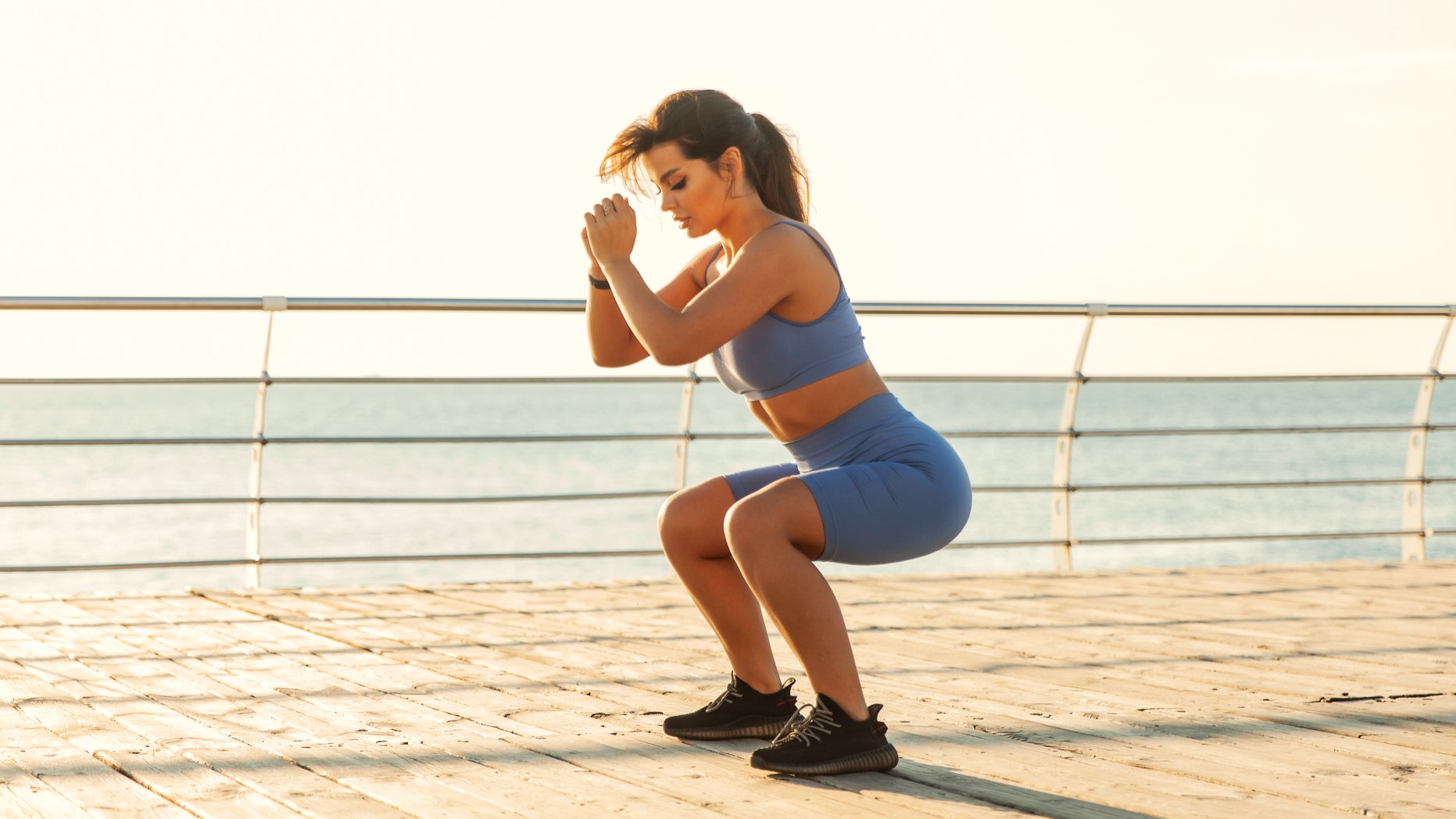
Some people find the gym motivational, but you don’t have to take out an expensive monthly membership to build muscle and strengthen your core (the muscles that connect your upper and lower body). All you really need is your body weight and a set of dumbbells to get started.
If you’re hoping to train at home regularly, we recommend picking up a set of the best adjustable dumbbells, as you can quickly change the load between moves and gradually increase the weight as you get stronger, following the progressive overload training technique.
It’s also fine if you have fixed-weight dumbbells, just be sure to choose a load that’ll challenge your muscles to get through a set but won’t affect your form. Then you’ll be ready to take on these three essential strength exercises recommended by Peloton instructor Jermaine Johnson.
According to Johnson, “These exercises provide a solid foundation for overall strength and functional fitness, making them suitable for individuals of all fitness levels and goals.” They’re also ideal if you’re a regular lifter, as you can adjust the intensity by increasing the weight.
What are Jermaine Johnson’s three top strength exercises?
Johnson says that the “three essential resistance training exercises [he recommends] for most people are squats, deadlifts, and push-ups.” You only need the dumbbells for deadlifts initially, as you can do bodyweight squats and push-ups until you feel ready to add weights into the mix.
“Squats target the lower body, engaging the quads, glutes, and hamstrings. Deadlifts strengthen the posterior chain, including the hamstrings, glutes, and lower back. Push-ups are effective for the upper body, working the chest, shoulders, and triceps,” explains Johnson.
Each move also engages your core, a section of mid-body muscle that connects the upper and lower body, helps increase your stability, boost your balance, and improve your posture. Plus, it’s also where you’ll find the rectus abdominis six-pack abs muscle.
How to do Jermaine Johnson’s three-move strength workout
When you’re tight on time, it can be tempting to train to a timer, setting yourself a target to get through several circuits, but Johnson advises to stick to repetitions initially. He recommends that you “focus on performing 8-12 repetitions with proper form, increasing weight as you progress.”
“Rep-based training lets you control how hard you're working out, making sure you're engaging your muscles properly and pushing them enough,” Johnson adds, but that you should “rest when needed, and maintain consistency. Proper technique is crucial to prevent injuries. With patience and dedication, you’ll steadily build strength and achieve [your] fitness goals.”
1. Squats
- Stall tall with your feet shoulder-width apart and your toes slightly outward at 45 degrees.
- Begin to lower as if you’re sitting on a chair directly beneath you, sending your hips back in space.
- As you squat down, ensure that your knees track over your middle toe and your weight is evenly distributed through each foot.
- Make sure that your back is flat and lift your chest to avoid rounding your spine.
- Pause for a moment once your thighs are parallel to the floor, then push through your heels to stand and return to the starting position. That’s one rep.
2. Deadlifts
- Stand tall with a dumbbell in front of each foot, and feet slightly wider than shoulder-width apart.
- Hinge forward, sending your hips back in space, bending your knees as you lower, with a straight spine and core engaged.
- Reach down to grip each dumbbell, hands shoulder-width apart and palms facing your shins.
- Reverse the process as you begin to lift back up, keeping your chest up and engaging your glutes to power the movement.
- Rise until you reach the starting position, then hinge at the hips and lower the weights back to the floor. That’s one rep.
3. Push-ups
- Start in a high plank position, with your hands shoulder-width apart and directly under your shoulders, keeping your spine straight and core engaged.
- Slowly bend your arms and lower your chest towards the floor, pausing just above the ground, and hold this position for a moment.
- Straighten your arms, keeping your core engaged and spine straight, as you return to the starting position. That’s one rep.
Can you build muscle with this three-move workout?
Each move in Johnson’s routine is an example of a compound exercise that works multiple muscles simultaneously. It’s an effective and efficient way to train and helps you develop functional strength that can help with everyday activities like walking and lifting.
But if you do this routine regularly, you’ll start to find the moves easier. At that point, you’ll need to adjust your training to keep seeing results. According to Johnson: “It helps to change up your routine and challenge your muscles in new ways.
“Reassess your workout program and make adjustments to increase intensity or volume. This could involve adding more weight, increasing the number of repetitions or sets, or decreasing rest intervals between exercises.”
Plus, you can vary the type of weights you use. “Dumbbells are versatile and allow for a wide range of exercises, making them great for targeting specific muscle groups with isolation movements. They’re also ideal for beginners due to their familiarity and ease of use.”
Meanwhile, if you want to challenge your muscles differently, engage your core, and work on your stability, it’s worth considering adding kettlebells into your routine. As Johnson explains: “Kettlebells offer benefits such as enhancing grip strength, coordination, and functional movement patterns. They’re particularly effective for dynamic, full-body exercises like swings.”







